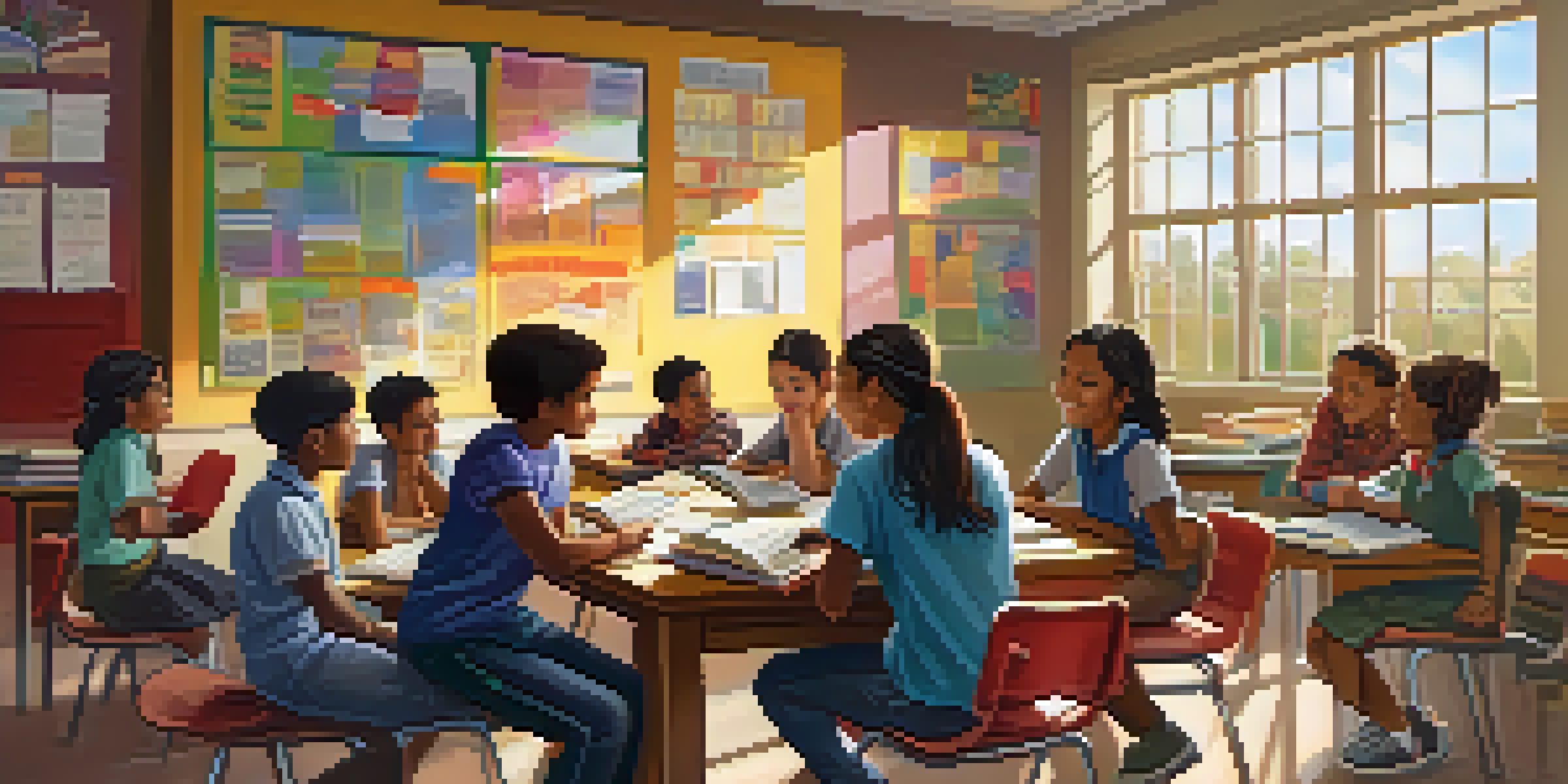The Role of Reflection in Constructivist Learning

What is Constructivist Learning and Its Foundations?
Constructivist learning is an educational approach that emphasizes the learner's active role in constructing knowledge. Instead of passively receiving information, students engage with concepts, experiment, and derive their own understanding. This hands-on method fosters deep learning as students connect new information with their existing knowledge base.
We learn by doing, but only if we reflect on what we are doing.
At its core, constructivism is rooted in theories proposed by educational pioneers like Piaget and Vygotsky. They believed that knowledge is not merely transmitted but constructed through social interactions and experiences. This perspective encourages learners to take ownership of their educational journey, making learning more personal and relevant.
In this context, reflection serves as a vital tool, allowing learners to process their experiences, evaluate their understanding, and adjust their approaches. It transforms learning from a passive reception into an active, dynamic process where students continuously refine their knowledge.
The Importance of Reflection in Learning Processes
Reflection is essential in the learning process as it helps individuals consolidate their experiences and insights. By taking the time to think about what they’ve learned, students can identify gaps in their knowledge and areas that require further exploration. This self-awareness paves the way for deeper learning and promotes critical thinking skills.

Moreover, reflection encourages learners to connect theoretical concepts to real-life situations, enhancing the relevance of their education. For example, a student studying environmental science might reflect on local ecological issues, thus bridging classroom knowledge with practical application. This reflection fosters a sense of responsibility and ownership over their learning.
Constructivist Learning Empowers Students
This approach encourages active engagement, enabling learners to construct knowledge through experience and social interaction.
Incorporating reflection into learning routines can also boost motivation. When students see how their experiences contribute to their understanding, they become more engaged and invested in their learning journey. This intrinsic motivation fuels a lifelong passion for learning, making reflection a key component of the educational experience.
Types of Reflection in Constructivist Learning
There are various types of reflection that can be integrated into constructivist learning, each serving a unique purpose. For instance, reflective journals allow students to document their thoughts and experiences regularly, fostering a habit of self-assessment. These journals can become valuable resources for both students and educators in tracking progress over time.
Reflection is the lamp of the heart. If it departs, the heart will have no light.
Another type is peer reflection, where students engage in discussions with classmates about their learning experiences. This collaborative approach not only enhances understanding but also builds communication skills and encourages diverse perspectives. By sharing insights, students can challenge their assumptions and deepen their comprehension of complex topics.
Finally, guided reflection, often facilitated by educators, provides structured opportunities for students to analyze their learning. This might involve prompts or questions that guide students through their thought processes, helping them arrive at meaningful conclusions. Such guidance can be instrumental in developing critical thinking and analytical skills.
Barriers to Effective Reflection in Learning
Despite its importance, several barriers can hinder effective reflection in learning. One significant challenge is the fast-paced nature of modern education, where students often feel rushed to absorb information rather than think critically about it. This pressure can lead to superficial learning and a lack of meaningful reflection.
Additionally, some students may struggle with self-doubt or fear of judgment, which can inhibit their willingness to share reflections openly. The classroom environment plays a critical role here; fostering a safe and supportive atmosphere is essential for encouraging honest and constructive self-evaluation.
Reflection Enhances Learning Depth
Reflective practices allow students to consolidate their experiences, bridging theoretical concepts with real-life applications.
Lastly, time constraints can limit opportunities for reflection. With packed curricula and tight schedules, educators may feel compelled to prioritize content delivery over reflective practice. However, integrating reflection into learning doesn’t have to be time-consuming; even short, focused reflection activities can yield significant benefits.
Strategies to Implement Reflection in Learning
To effectively incorporate reflection into constructivist learning, educators can implement various strategies. One effective method is to create regular reflection prompts that encourage students to think critically about their learning experiences. These prompts can be simple questions like, 'What did I learn today?' or 'How can I apply this knowledge in the real world?'
Another approach is to integrate technology into reflective practices. Digital tools like blogs or online discussion boards allow students to share their reflections in an interactive format, making the process more engaging. Additionally, these platforms can facilitate peer feedback, further enriching the reflective experience.
Finally, educators can model reflective practices themselves, demonstrating the value of self-assessment and continuous learning. Sharing personal reflections can inspire students to be more open about their learning journeys, creating a culture of reflection within the classroom.
The Role of Educators in Fostering Reflection
Educators play a crucial role in fostering reflection within constructivist learning environments. They can create a supportive atmosphere that encourages students to express their thoughts and feelings about their learning experiences. By recognizing and valuing reflections, teachers show students that their insights are important and contribute to the learning community.
Moreover, educators can facilitate reflection through structured activities and discussions. By guiding students in reflecting on their learning processes, teachers can help them develop essential skills such as critical thinking and self-assessment. This guidance is crucial in helping students articulate their understanding and identify areas for improvement.
Educators Foster a Reflective Culture
Teachers play a vital role in promoting reflection by creating supportive environments and providing structured activities that enhance critical thinking.
Additionally, providing timely feedback on reflective practices can enhance student growth. When educators offer constructive feedback on students' reflections, it reinforces the importance of this process and encourages deeper engagement. This two-way interaction can significantly enrich the learning experience.
Future Directions for Reflection in Education
Looking ahead, the role of reflection in education will likely continue to evolve, especially with the integration of technology. As digital tools become more prevalent, educators can explore innovative ways to facilitate reflection, making it more engaging and accessible for students. For instance, virtual reality experiences could allow students to reflect on simulations of real-world applications.
Moreover, the growing emphasis on social-emotional learning highlights the importance of reflection in developing self-awareness and empathy. Educators may incorporate reflective practices that address not just academic learning but also personal growth, helping students to navigate their emotions and relationships more effectively.

Ultimately, as educational paradigms shift towards more learner-centered approaches, reflection will remain a cornerstone of effective learning. By prioritizing reflection, educators can empower students to become lifelong learners who are capable of adapting and thriving in an ever-changing world.